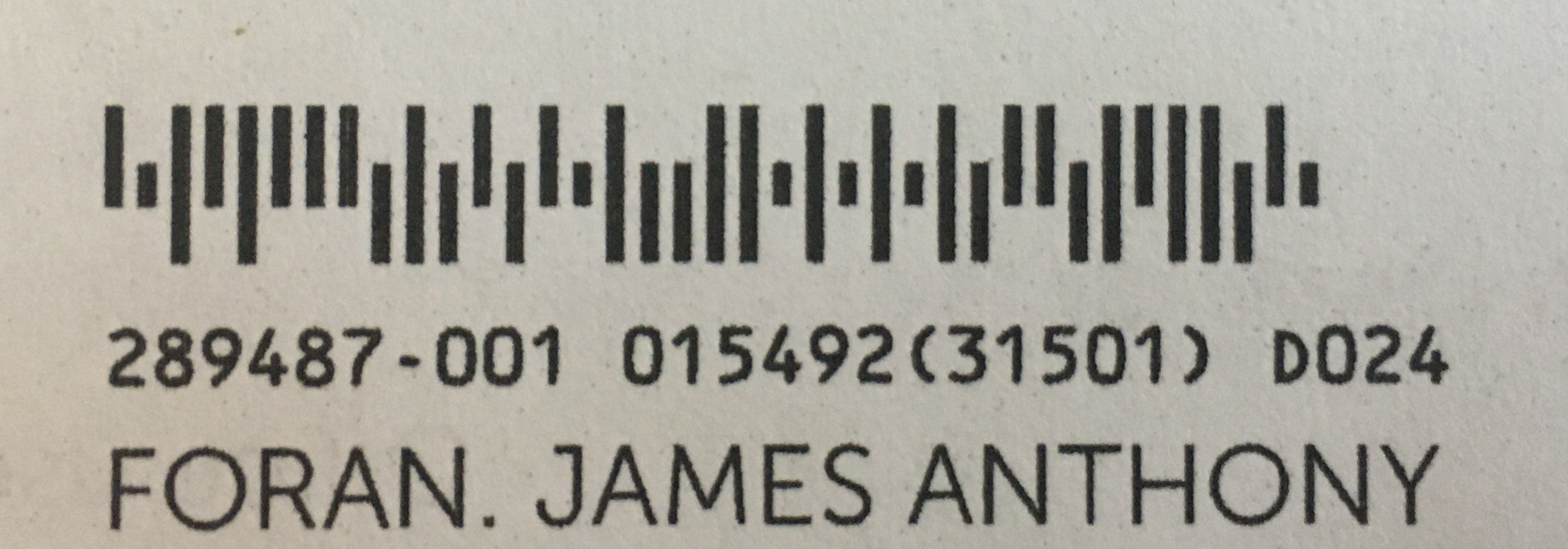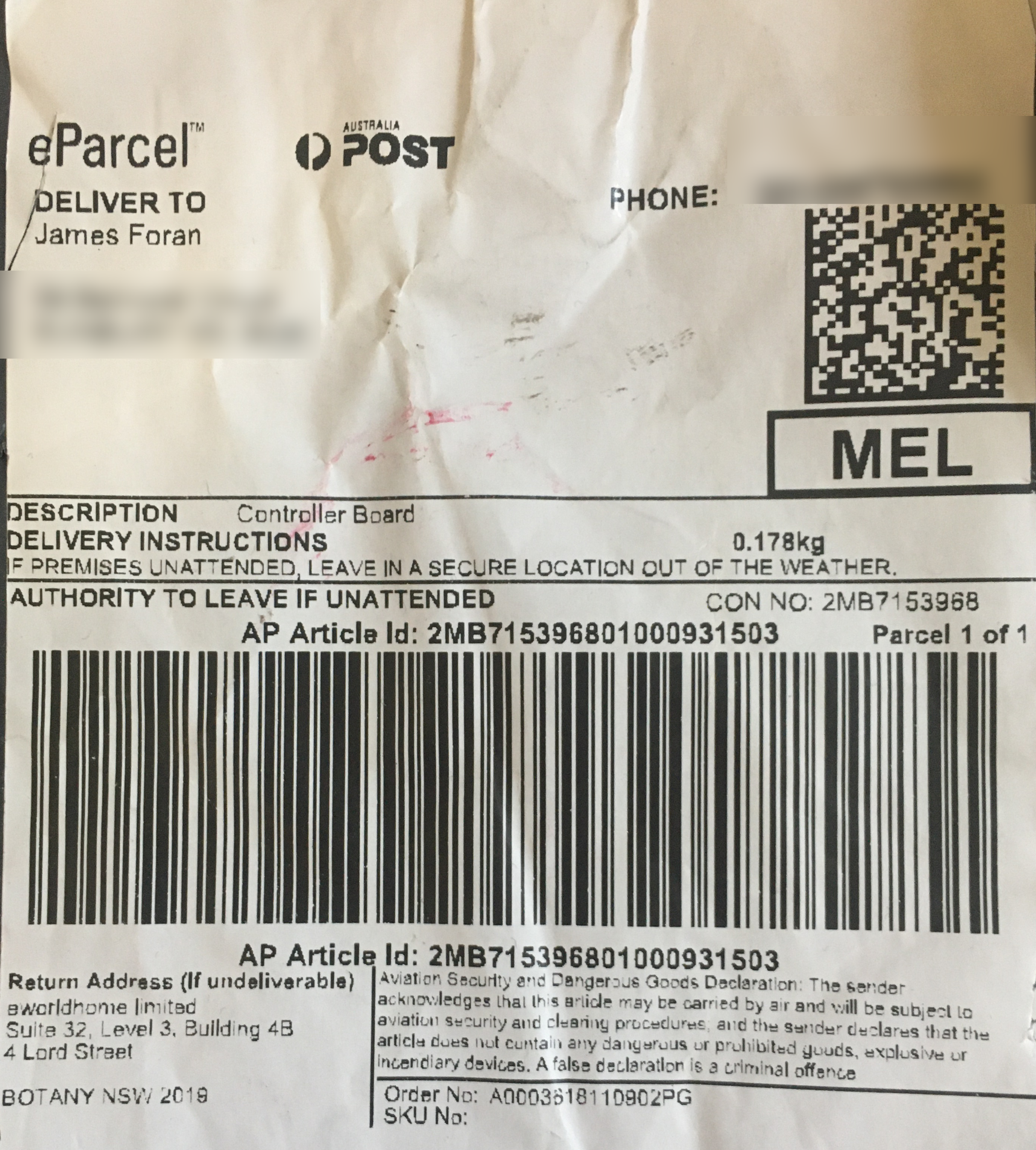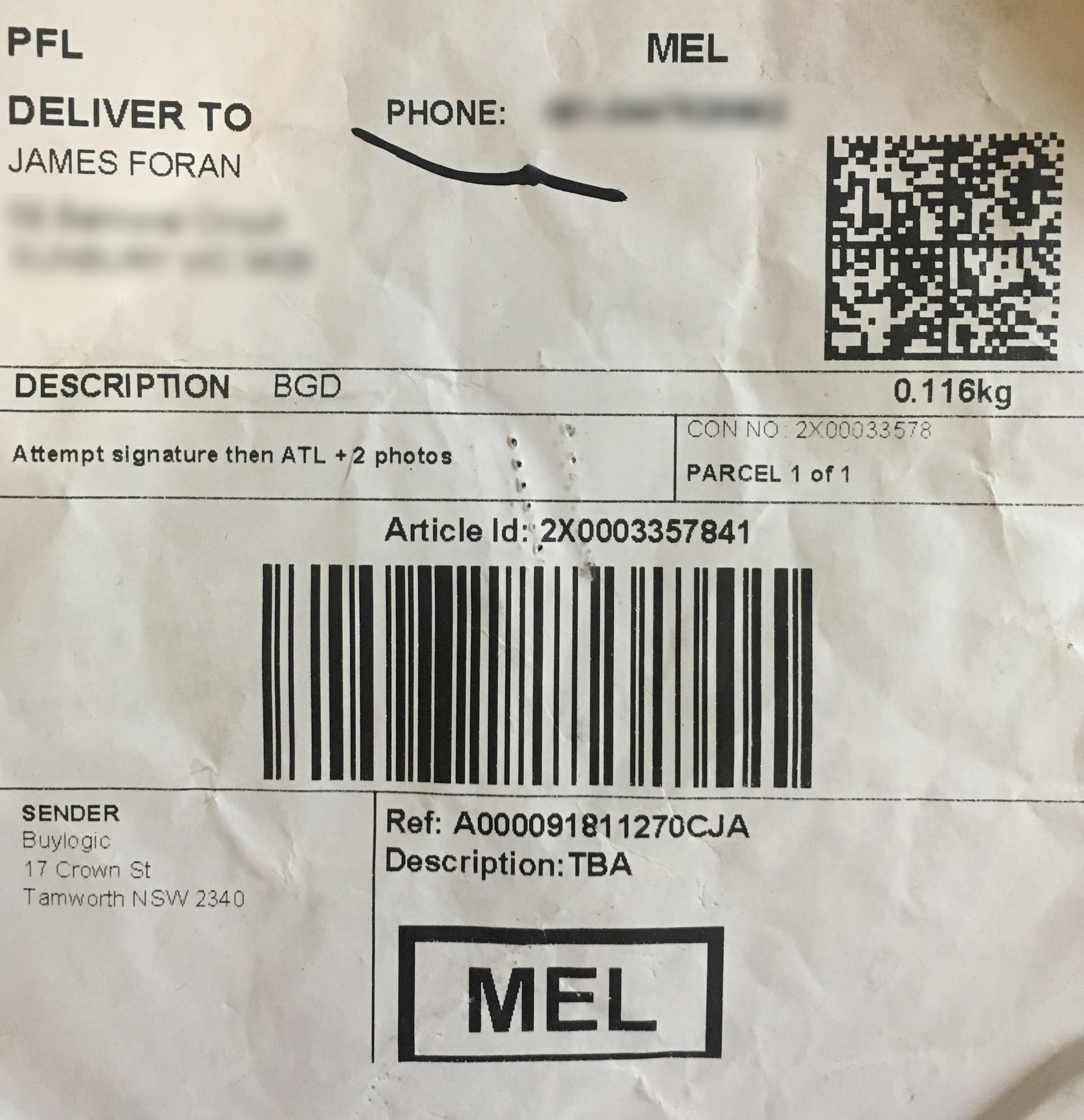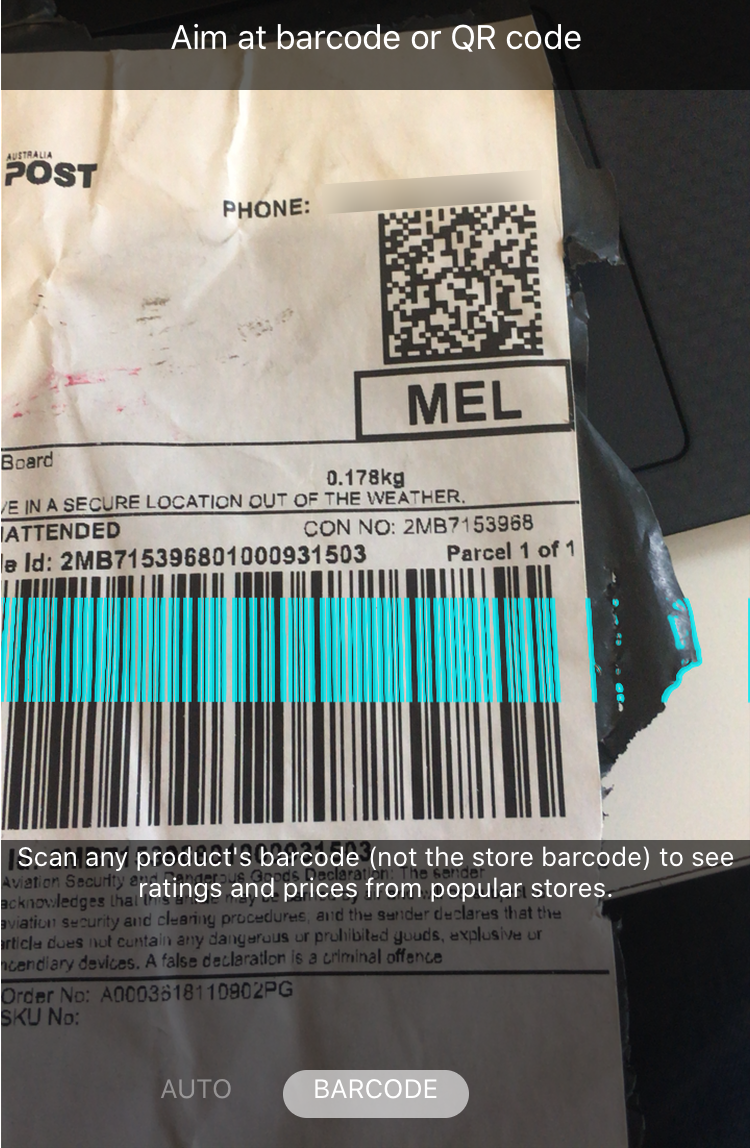Postal vs Parcel

If your household is anything like mine, you have seen a huge increase in the number of parcels that have been delivered to your house in the last month. With the entire world is seemingly in some form of lockdown, online shopping is one of the only "normal" things that we have left in our lives. But how do all these items make it to your house? It appears to be quite different from the postal network that delivers our 🐌mail. You cannot simply write an address on a box, and send it! Lets start by taking a look at the post...
The Post

Have you ever wondered why it is called POST? Apparently, back in the day, the mail used to be nailed to a POST in the centre of town and eventually, the mail-bag was nailed to a post, and people used to go a "check the post". There were posts between towns, and mail was transferred between POSTS, forming the first postal network. If you want to find out more head to Wikipedia.
Things have changed a little now. Every single house now has its very own post(box), and the postal network extends across the entire globe! Pretty amazing really. You can even send a letter to the north pole!
To send a letter, all you have to do is write an address, preferably neatly, and ideally, at least in Australia, you will write the postcode in the 4 small boxes provided. Next, you affix a stamp, which is how you pay for the service, and drop the letter in a post box.

From there, the mail goes to a local sort facility, starting its multi-leg journey to the recipient. Automatic sort systems can process over 50,000 letters an hour. For letters staying in-country, sort is done based on the postcode (aka zip code). The systems that read the address have a pretty tough job. But, they do it quickly, and when required, they print a postal barcode on the envelope or postcard, which is then used to sort the mail automatically through the rest of the network.

Above is a postcard my son received recently. You can see the 4 state barcode faintly on the letter.

Above is another example of a 4 state barcode on a letter. These are printed on the letter by the sender, and are almost always BILLS! For more info on these, read this article from Australia Post.
Parcel
Today, postal networks are now capable of handling small, non-flat parcels too. But for this discussion, we are going to focus on parcels that do not go via regular post.
So how do parcel networks vary from postal networks? The result is much the same. The items being delivered ends up at the recipient address. Simple. But, several things make it more complex. Letters are generally flat and are a fairly standard size. There is only 1 place you can write an address on an envelope. A Parcel on the other hand, generally has 6 sides and will vary in shape, dimensions and weight! You can stick a freight label anywhere you want.
Parcel networks also have far fewer nodes. While most towns will have a post office, each major city may have only 1 parcel sort facility per network.
There is no single parcel network. While national postal companies offer this service, they are not alone. Many logistics organisations have a parcel delivery service, and event within single organisations, multiple parcel networks may, and do exist. But to send a parcel, you do not write the address on the box. you have to stick a label on the box, that contains a whole lot more information than just an address.
Freight Label

So the Freight label is quite a strange one... What is all that extra information?
The label above is a mixture of machine readable barcodes, and human readable information, that will be used throughout the network, to ensure the item is delivered successfully. Lets take a look at some of extra information we see on freight labels:
Item Barcode: Each Consignment can be made up of multiple freight items. Each freight item must be uniquely identified so it can be routed through the network. If you are sending 4 items in a single consignment, each item is individually labelled and tracked.
MEL It actually stands for Melbourne. This is a visual aid that will help this parcel get onto the correct linehaul truck, should automated sort systems be unavailable. In Australia, this is similar to the first digit of the post code.
Delivery Instructions: This is something we definitely don't see letters. A parcel can contain valuable items though, and having the latest iPhone delivered to your house, and left on the front door step is not ideal. It can also not really be put in the letter box. These delivery instructions help transport companies complete a delivery even when the driver is unable to deliver the items in person at the delivery address.
Authority to Leave This is set per delivery item, and is either set by the sender, or the receiver. For low value items, this is used frequently.
Today, in the current lock-down environment, this is the default, as most people are home.Alternative Delivery Point If a delivery is not made, then the package may be sent to an alternative location. For Australia Post, this would be the local post office, or sort facility. For other networks, this could be the newsagency, a pharmacy, or anywhere really that is part of the specific network.
Parcel Networks permalink
As we mentioned before, there is no single network, meaning there is also no single location where all parcels addressed to you go, before the last leg of the journey. Each parcel carrier will have their own set of hubs/nodes. Unlike the postal network, where the last leg will always start from the local post office, the last leg for parcels can originate from anywhere within a 50-100km radius, depending on where you live.

Another consideration is that each network has a unique automated sort system, if they have one at all. It is more complicated than mail not just due to 6 sides, but also the way logistics companies charge for these services.
Payment permalink
In many cases, the freight charges are not pre-paid for parcels. This is in part due to the irregularity of parcel weight and dimensions. Also, drivers doing pickups are not equipped to receive payment for freight as they pick it up. Logistics companies will pickup freight prior invoicing a customer. Once freight makes it to a major hub, it will be automatically measured and weighed. Using this information, billing weights will be calculated. A new article will be out soon dedicated to discussing dimensional weight. Its a tricky one!
Scanning a Freight Label permalink

You can do this at home, with your smart-phone! Yes, that's right. It really is hours minutes of fun. Try it for yourself. Here's how.
- Open Google Chrome, or Microsoft Edge web browser ( I use an iPhone)
- Select a New TAB.
- Select the 📷 camera icon. This should open your camera within the app, providing you have given the right permissions.
- There should be options at the bottom to select barcode. select this.
- Point the camera at a freight barcode. Most 2 dimensional, or 1 dimensional barcodes will work.
- The data from the label will then be entered into a google search.
The information returned will vary depending on the barcode type. In most cases, it will just be a string of numbers, however, with some QR codes, you should get your actual address returned directly from the scan!
Label Formats permalink
The data contained within the barcodes varies greatly. Often that data is just a reference, which on its own means nothing, and other times it will be a physical address!
Take a look at these two freight labels:

Both are from Australia Post. The one on the left is Star Track, and the one on the right is for the postal business.
These two formats are vastly different. I cannot work out how to read the StarTrack 2 dimensional code. If someone can give me more info on this, I would appreciate it! Please add your comments below.
So, labels even within a single organisation are not standard. I am sure Australia Post has different labels for international freight also. By why is there no standard?
The answer in this case is legacy systems. When Australia Post acquired StarTrack back in 2003, they also acquired all their technology, and label formats. These two divisions still primarily operate as separate networks.
One of the main reasons that these networks are not interoperable is label formats and scanning technology.
Standard Labels permalink
So surely the answer is standard Label formats. There is an organisation GS1 have done exactly that. They have developed standard label formats, which companies can use. Unfortunately, these standards are still open to interpretation. For example, both Australia Post and Toll have implemented GS1 compliant freight labels, however, they are using different 2-dimensional barcode formats, meaning that you cannot route an Australia Post parcel through a Toll sort facility, and vice versa. We see this working with international post, as well as airline bagage very effectivly.
So what? permalink
So why is this important? well, as our dependency on parcel networks continues to grow, our economy will become more and more reliant on the resilience and scalability of the parcel networks. These networks are under huge strain at the moment, seeing volumes being 4-5 times the average for this time of year due to COVID-19.
Earlier this year, we also saw the Toll parcel networks unable to operate automated systems, or even print labels, due to a systems outage that lasted weeks.
A nationwide standard label format would give more choice to customers, and improve efficiencies within the warehouse. It would also allow networks to scale, and provide real interoperability between parcel networks.
The Future
Will we see a consolidation of parcel networks? Will Australia Post become the only way to deliver parcels in Australia, similar to how it is the only way to deliver a letter?
I would love to hear your thoughts below.

